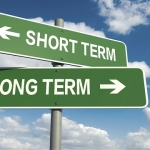Having served many clients over quite a few years, it is not surprising that we repeatedly run into some version of the question posed above. There are various forms of the same question, but essentially they all reveal the same human fear: If an event happens that represents the end of life as we know it, can my assets be protected? Can we hedge in some manner? Can you foresee it and “get me out in time?” Is there some sort of portfolio “insurance” in cases like this? It is embedded in our nature as human beings. We want to avoid taking the unexpected torpedo that may sink our ship.
This is not an easy question to answer, but it is worth discussing in my two part article.
Some Historical Examples
In thinking about events that can potentially destroy an investment portfolio, it is useful to draw from history when significant negative events have occurred. Students of market history can think of many examples:
- The Japanese sneak attack on Pearl Harbor on December 7, 1941, thrust the United States into World War II. The entire west coast of the United States prepared for an invasion by Japanese military forces and Japanese-Americans were held in detention camps for the next 4 years of the War.
- The Cuban missile crisis stand-off occurred in October 1962, when the world came to the very brink of a nuclear arms exchange between two superpowers – the U.S. and the Soviet Union. This was the apex of the Cold War that nearly became very hot.
- The assassination of President John F. Kennedy in a Dallas motorcade on November 22, 1963, shocked the nation. Many suspected involvement of foreign conspirators and viewed this as an assault on U.S. society and our institutions.
- The terrorist attacks upon U.S. soil in September 2001 brought down the World Trade Center towers in New York City, killing more than 2,000 people and launching the official “War on Terror.”
These are all historically defining events in the sense that they were a shattering of the status quo. The far-reaching effects created great uncertainty about the future in the minds of all Americans and certainly in the thinking of market participants investing money.
These four examples share one thing in common. They represent somewhat short-term events in terms of their market impact. For example,
- During those 14 days of the Cuban Missile Crisis in October 1962, when the world stood at the nuclear brink, the Dow Jones Industrial Average dropped only 4.0 percent. When the crisis ended, the market began a bull run of more than 100 percent that lasted 4 years.
- The attack upon Pearl Harbor was a bit more dramatic. Stocks fell 7.6 percent in the two trading days following the Sunday morning surprise attack. Investors buying the market on the day after the attack enjoyed a 25.0 percent per year return over the next four years, and through the end of World War II.
- When John Kennedy was assassinated, the market dropped 2.9 percent, but actually enjoyed a 4.5 percent rebound the very next trading day. Over the following 12 months, the market proceeded to gain 25.0 percent. Though few people know it, the market’s rise on the day following Kennedy’s assassination is one of the largest one-day market advances in history.
- More recently, the S&P 500 Index declined 11.6 percent in the week following the 9/11 terrorist attacks on the World Trade Center. However, in less than a month, the market recovered all of this lost ground and was trading above the levels preceding those attacks.
What are the Historical Lessons?
Is there any important take-away from these historical observations? Yes, there are two that are important to understand.
First, they remind us that human beings have an inherent economic survival instinct and are resilient in this regard. When world events conspire to instill fear and panic, this is inevitably followed by a response of attempting to go back to work to restore order, make necessary repair and provision, and improve conditions. This is true of individuals, families, and nations. Damaged institutions are gradually repaired, restored, and ultimately improved. Therefore, the great danger in making significant investment decisions in your portfolio that are motivated by the fear of Armageddon is that you are making a bet about the future that is in direct odds with the centuries-old truth about human motivation.
Second, these historical events highlight the very real and inherent pitfalls in attempts at market timing decisions intended to “get me out,” when conditions look threatening. There is a strong human temptation favoring a notion of converting all of one’s portfolio assets to the safety of cash just prior to one of these torpedoes striking the ship, and then immediately reinvesting every penny after the market has sustained the damage. It sounds wonderful. This perfect time, however, is a fantasy and we know of no one who has been able to do it with any consistency. The examples of history noted earlier actually prove the point. Who guessed at the market-open on September 11, 2001, “I think America is going to be severely attacked by terrorists today, so I’ll sell all my stocks.” And as unlikely as that was, it is probably more unlikely that this same wise sage would have concluded after a week’s sharp decline in the re-opened stock market, “I think it is now time to put all my money back to work because the market will probably rebound and make up all this ground in the next month.” This is tempting to fantasize about, but impossible to execute.
So What are the Practical Applications? Part two of this article Protecting Your Investment Portfolio Appropriately covers that along with Conclusions that can be drawn.
To learn more about Linscomb & Williams, view their Paladin Registry profile.
Linscomb & Williams does not provide legal, tax or accounting advice. The information, analysis, and opinions expressed herein are for general and educational purposes only. This presentation may contain forward looking statements that may or may not occur. Nothing contained in this presentation is intended to constitute legal, tax, accounting, financial, or investment advice. Always consult with your independent attorney, tax advisor, and other professional advisors before changing or implementing any financial, tax or estate planning strategy.
Information expressed herein is based upon opinions and views of Linscomb & Williams and information obtained from third-party sources that Linscomb & Williams believes to be reliable, but Linscomb & Williams makes no representation or warranty with respect to the accuracy or completeness of such information. All opinions and views constitute our judgments as of the date of writing and are subject to change at any time without notice.
Other posts from Harold Williams
The High Cost of the College Investment
Second to purchasing the family residence, the financial support parents provide to children attending college is the largest...
“Lower Investment Returns Ahead!” – (False Alarm?)
If you follow headlines in the financial press or read the blogs of various online “authorities,” you have...
Investment Decisions in Haste – Is a Waste of Time
Recently in an Investment Committee discussion we reviewed a client portfolio with the wealth advisor who manages the relationship and...






I anticipate a very choppy 2016 market. When China lowered its currency value in October I had my advisor go to 30% cash, then 40% when the yuan again was lowered late in December. As expected, the US manufacturing and exporting followed suit. Then I asked him to invest heavily in gold at its bottom and to short stocks and sell calls.
I would expect similar action by any financial advisor I use when very special situations occur. This tactic seems opposed to your investing philosophy, so I should probably look elsewhere.